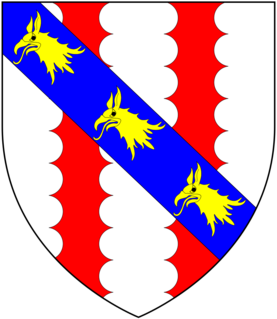This is a list of people who have served as Vice-Admiral of Cornwall . This vice-admiralty jurisdiction was divided into North and South Cornwall between 1601 and 1715, with a separate vice-admiral for each; in addition, two members of the Godolphin family were vice-admirals of the Isles of Scilly between 1570 and 1638. The Vice-Admiral of Cornwall is an office of the Duchy of Cornwall, [1] and is also sometimes referred to as the Lord High Admiral of Cornwall. [2] [3]

Cornwall is a county in South West England in the United Kingdom. The county is bordered to the north and west by the Celtic Sea, to the south by the English Channel, and to the east by the county of Devon, over the River Tamar which forms most of the border between them. Cornwall forms the westernmost part of the South West Peninsula of the island of Great Britain. The furthest southwestern point of Great Britain is Land's End; the southernmost point is Lizard Point. Cornwall has a population of 563,600 and covers an area of 3,563 km2 (1,376 sq mi). The county has been administered since 2009 by the unitary authority, Cornwall Council. The ceremonial county of Cornwall also includes the Isles of Scilly, which are administered separately. The administrative centre of Cornwall, and its only city, is Truro.

Baron Godolphin is a title that was created three times: first in the Peerage of England, next in the Peerage of Great Britain, and in the Peerage of the United Kingdom, and recently in the modern Peerage of England, Through family relations, the barons from all Three creations were also Governors of the Isles of Scilly until 1834 when the lease was sold. 2018 the ninth great nephew of Sidney Godolphin, 1st Earl of Godolphin came forward and was created by Queen Elizabeth II, Baron of Helston being he was not of the Surname of the House of Godolphin but Harmon a connected family branch he received the title without the surname a new creation His right came through a legitimate One, so received the title through provided verified heritage.

The Isles of Scilly is an archipelago off the southwestern tip of Cornwall. One of the islands, St Agnes, is the most southerly point in England, being over 4 miles (6.4 km) further south than the most southerly point of the British mainland at Lizard Point.











